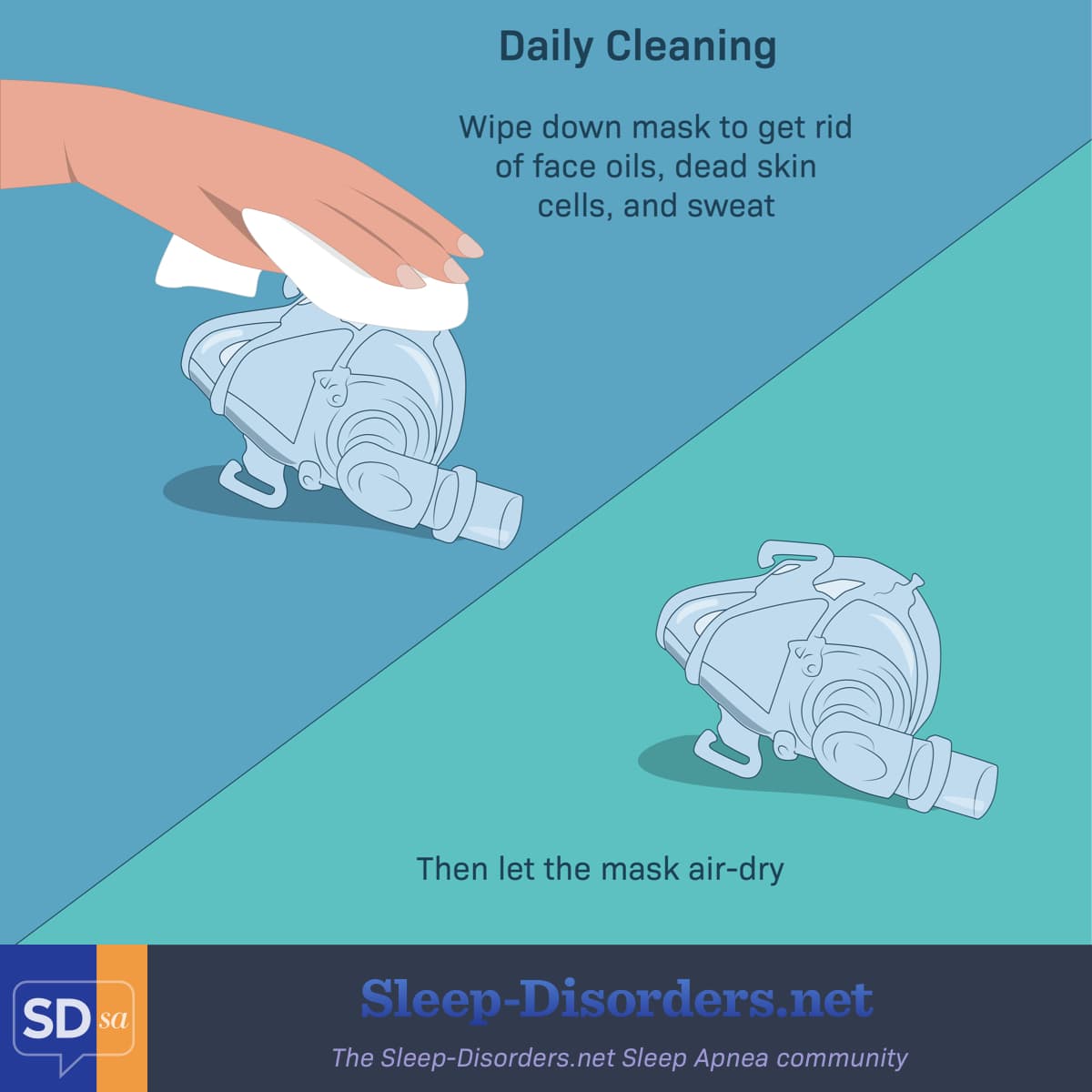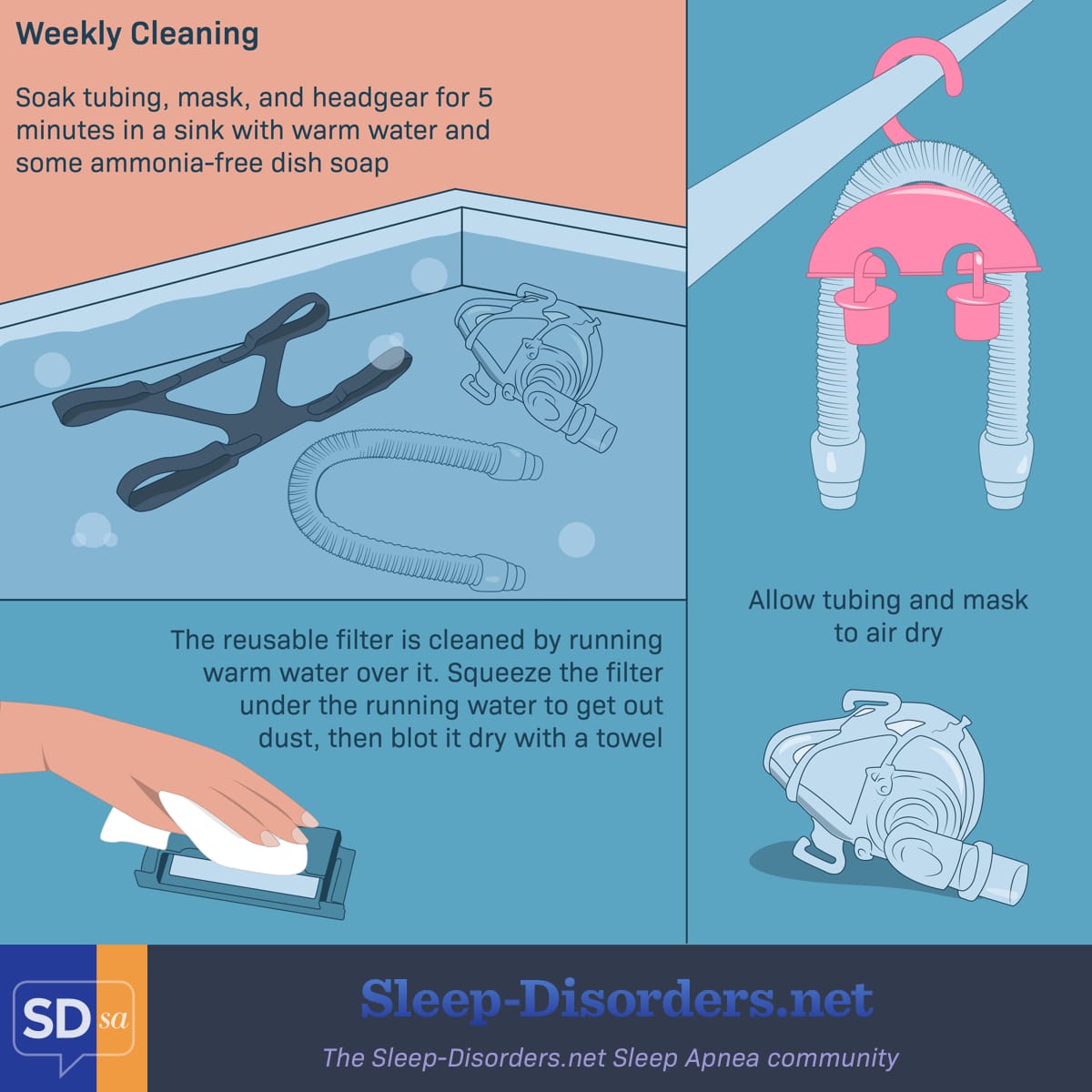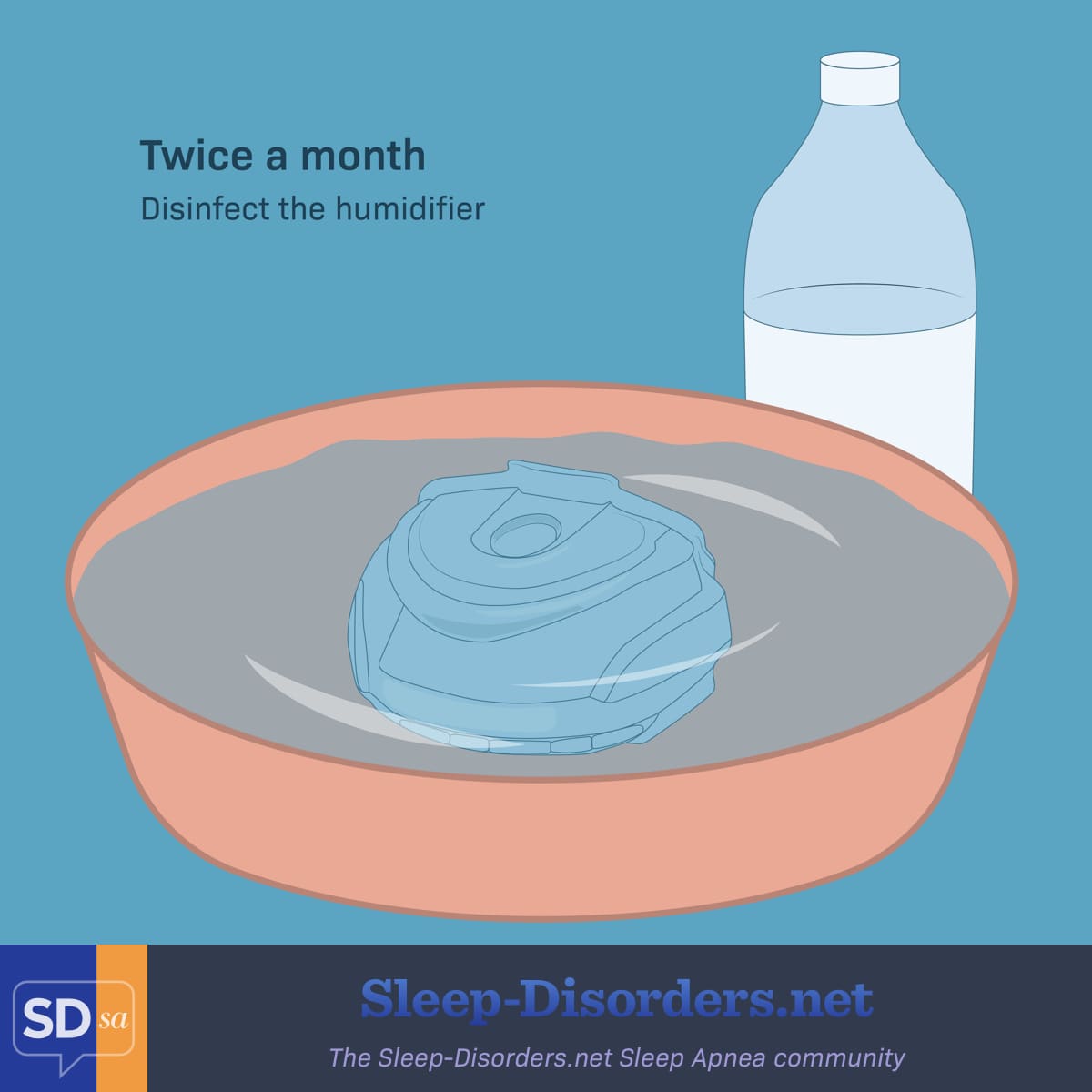How to Maintain Your CPAP Machine
Reviewed by: HU Medical Review Board | Last reviewed: June 2020 | Last updated: May 2023
A CPAP machine pushes moist air into your airway as you sleep. CPAP stands for continuous positive airway pressure and it is a common treatment for obstructive sleep apnea. This helps you rest and get enough oxygen while you sleep.
But, you need to keep your CPAP machine clean to prevent it from turning into a breeding ground for germs that can make you sick. A regular maintenance routine is an important part of using a CPAP machine. Keeping your CPAP machine clean also helps it work better and parts last longer.
There are many different brands and types of machines to help people with sleep apnea. Your machine may have slightly different cleaning instructions. But here are some general cleaning tips that apply to most CPAP machines.1,2
Daily cleaning
Each morning you should wipe down your mask, especially the parts that touch your skin. You should use a damp washrag or towel with a mild soap and warm water. After a wipe-down, let the mask air-dry. This gets rid of face oils, dead skin cells, and sweat that can build up quickly. Any build-up can keep your face mask from sealing as well as it should.
You can also buy pre-moistened towelettes made especially for cleaning CPAP masks. These are called CPAP mask wipes. Check with your sleep doctor or CPAP supplier about where to get these.
Figure 1. Daily CPAP cleaning
If your CPAP machine comes with a humidifier, empty any leftover water each morning. Do not let it sit in the tank all day. You should also use distilled water to prevent build-up.
Weekly cleaning
Your CPAP mask and tubing need to be cleaned once a week. To do this, fill a sink with warm water and some ammonia-free dish soap. The tubing, mask, and headgear should be soaked for 5 minutes, rinsed, and then air-dried. Tubing can hang from a shower rod or towel rack to let the water drip out. The mask and headgear can be draped over a hanger or hung on a hook.
Figure 2. Weekly CPAP cleaning
Some machines have 2 filters. The reusable filter is cleaned by running warm water over it. Squeeze the filter under the running water to get out dust, then blot it dry with a towel. Other filters are disposable and replaced every month. If you notice a filter is dirty looking, replace it or clean it more often.
If your CPAP has a humidifier, the tank also needs to be cleaned weekly with warm soapy water and air-dried. Some manufacturers recommend you do this daily. Wipe down the outside of your machine with a moist rag with a little soap on it to get rid of any dust.
Twice a month
If your CPAP machine has a humidifier, you will need to disinfect it twice a month. One way to do that is to mix 1 part vinegar with 3 to 5 parts water and let it sit in the humidifier for 30 minutes. You then rinse out the water and put the humidifier in the dishwasher for a deeper clean.1,2
Figure 3. Twice a month humidifier disinfection
Once a year
You should have your CPAP machine checked out once a year to make sure it is still pushing the right amount of air you need. There is often no charge for this, but not all vendors offer this service. You should also keep an eye on your machine’s warranty and replace it as recommended.
Special cleanings
If you are sick, it is a good idea to wash your mask, tubing, humidifier, and filter every day. This should be done as long as your cold, flu, or virus symptoms last. Once you are healthy, consider replacing your mask and tubing. This will keep you from reinfecting yourself.
Other tips
Spilling liquids on your CPAP machine can damage it. That is why you take the humidifier tank off the machine to fill it.
Use a mild, unscented dish soap to clean your machine, unless the manufacturer recommends another cleaning product. Stronger chemicals, such as bleach, ammonia, and alcohol-based cleaners, can damage machines. Leftovers of harsh cleaners can also be breathed in later and damage your airways and lungs.
Do not use scented soaps or put scented oils into the humidifier water.
If you wear make-up during the day, remove it before putting on your mask at night.
Replacing CPAP parts
Your CPAP machine will need some of its parts replaced regularly. Some general guidelines are:
- Tubing should be replaced once a year, if not more often.
- There are many different types of face masks, headgear, and face or nose cushions. These are replaced anytime from twice a month to twice a year, depending on the type.
- The headgear can be replaced every 6 months.
- The humidifier chamber is replaced twice a year.
- The machine itself usually needs to be replaced every 5 years.
A clean, well-maintained CPAP machine will help you sleep better and stay healthier.


